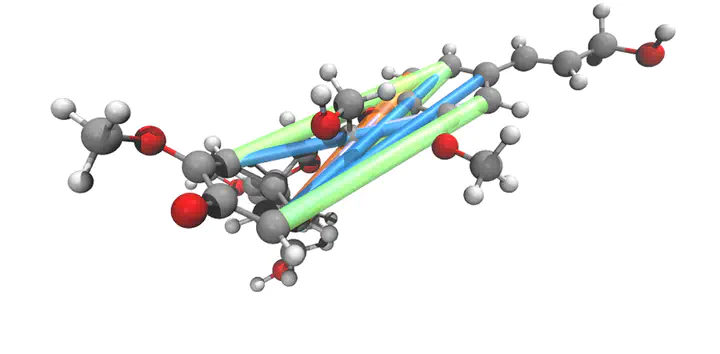Depolymerization Pathways for Branching Lignin Spirodienone Units Revealed with ab Initio Steered Molecular Dynamics

Abstract
Lignocellulosic biomass is an abundant, rich source of aromatic compounds, but direct utilization of raw lignin has been hampered by both the high heterogeneity and variability of linking bonds in this biopolymer. Ab initio steered molecular dynamics (AISMD) has emerged both as a fruitful direct computational screening approach to identify products that occur through mechanical depolymerization (i.e., in sonication or ball-milling) and as a sampling approach. By varying the direction of force and sampling over 750 AISMD trajectories, we identify numerous possible pathways through which lignin depolymerization may occur in pyrolysis or through catalytic depolymerization as well. Here, we present eight unique major depolymerization pathways discovered via AISMD for the recently characterized spirodienone lignin branching linkage that may comprise around 10% weight of all lignin in some softwoods. We extract representative trajectories from AISMD and carry out reaction pathway analysis to identify energetically favorable pathways for lignin depolymerization. Importantly, we identify dynamical effects that could not be observed through more traditional calculations of bond dissociation energies. Such effects include thermodynamically favorable recovery of aromaticity in the dienone ring that leads to near-barrierless subsequent ether cleavage and hydrogen-bonding effects that stabilize newly formed radicals. Some of the most stable spirodienone fragments that reside at most 1 eV above the reactant structure are formed with only 2 eV barriers for C–C bond cleavage, suggesting key targets for catalyst design to drive targeted depolymerization of lignin.